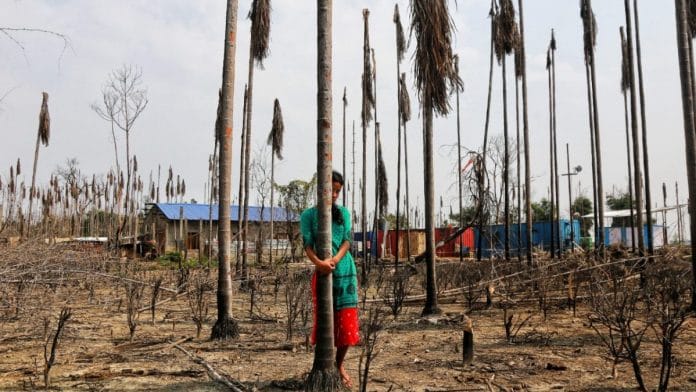Baghjan: On 27 May 2020, at around 10 am, 17-year-old Toramoni and her family in Assam’s Baghjan were having breakfast when they were asked to vacate their house. The oil well of Oil India Ltd (OIL) in their village had exploded.
Toramani, along with others in her village, was forced to seek refuge in a nearby school while a fire that subsequently began after the blowout reduced all their belongings to ashes.
The fire started in Baghjan village, located in the Tinsukia district, on 9 June 2020, after the explosion in OIL’s oil well number 5.
The fire lasted five months before it was doused in November last year, with experts from Canada employing a special ‘snubbing’ technique to cap the well.
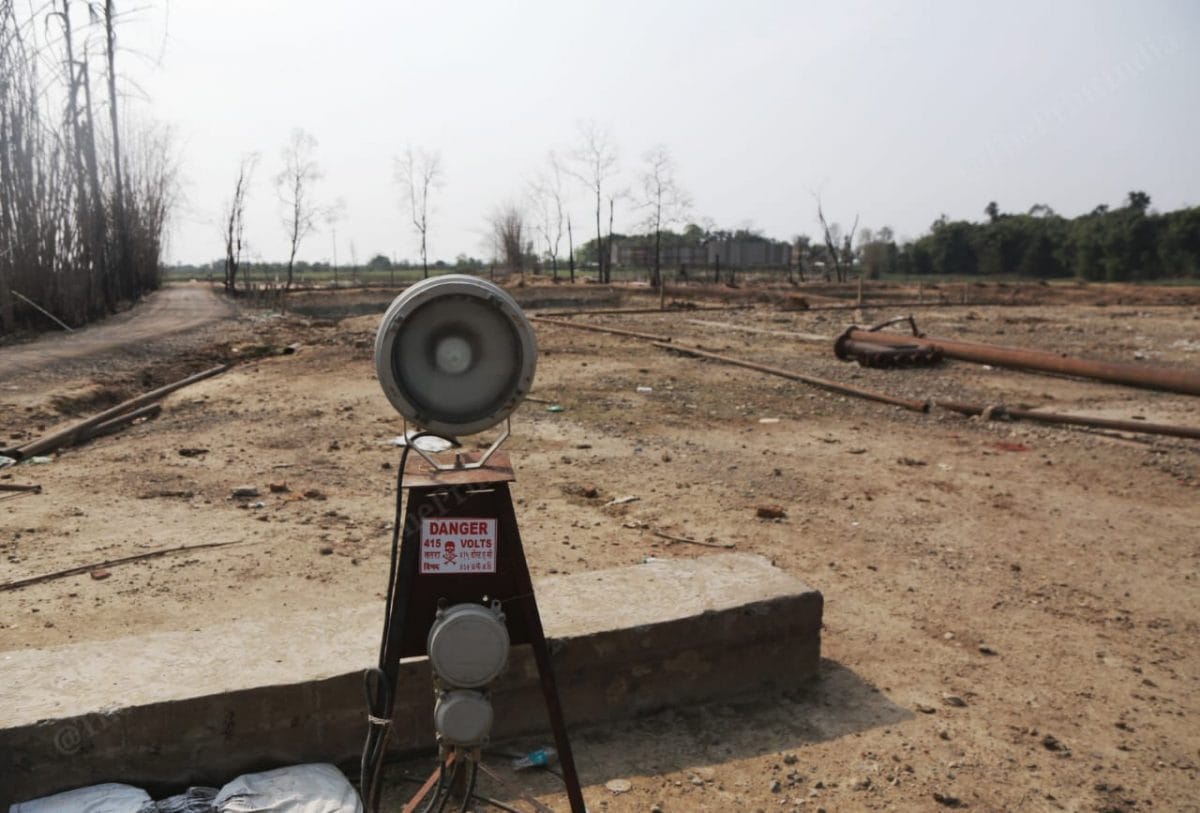
The village has vast stretches of green and fertile land, populated with tea and betel plantations.
However, the five-month-long blaze left a trail of destruction.
Villagers recall how they had to abandon their homes, livestock and tea gardens and run for their lives. “It (the fire) was spreading and we were all scared,” Amal Saikia, a local resident helping victims rebuild their homes, told ThePrint.
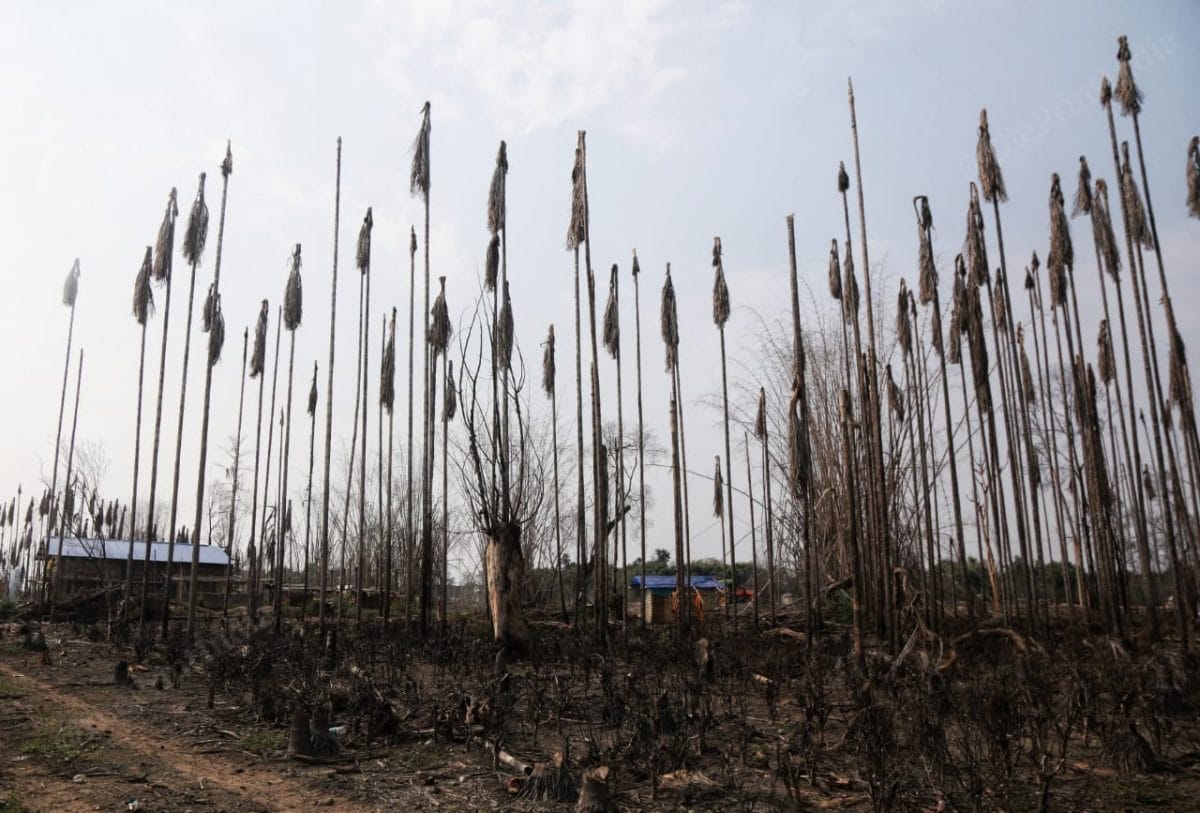
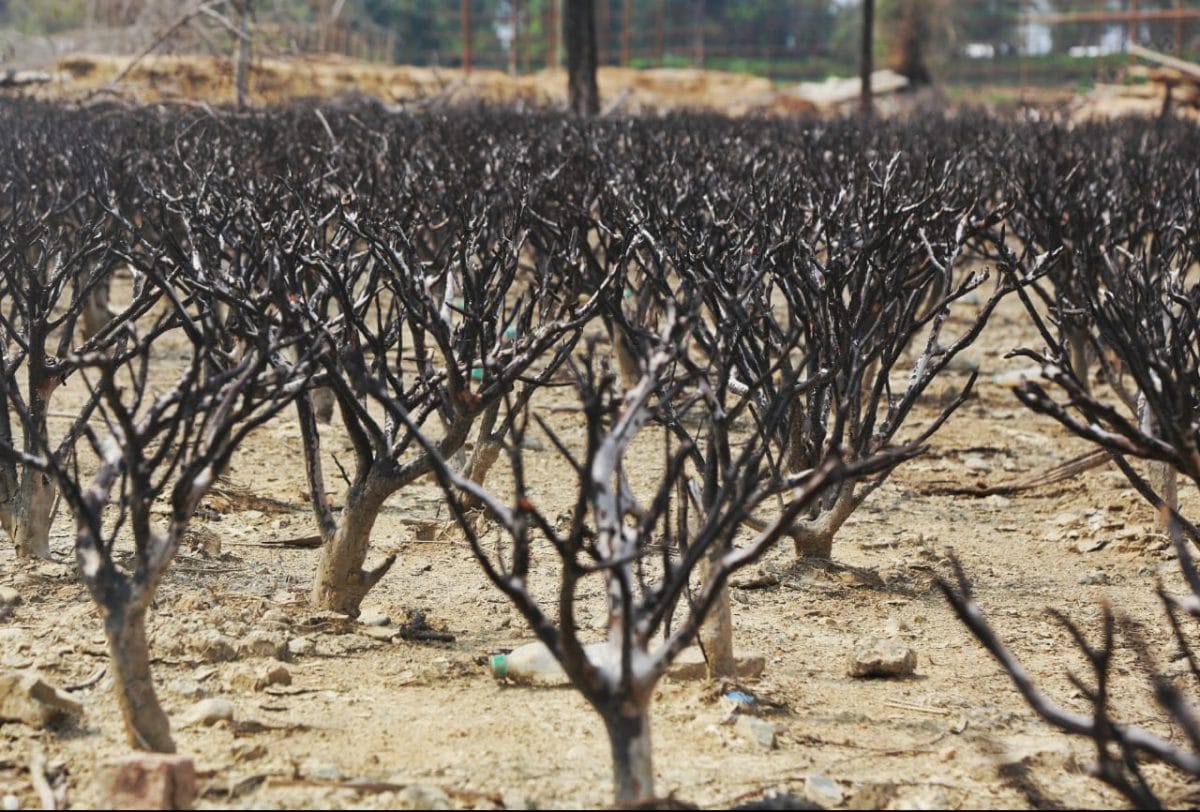
Toramoni’s neighbour Nobabi Saikia and her three-year-old daughter Tanushree had to use a boat to reach a safe location. The backyard of her home was flooded at the time.
“No one came to our rescue, I saw people running, and decided to leave with my daughter,” she told ThePrint. Nobabi’s husband was in Chennai when the fire occurred.

Nobabi is now back where her house once stood. Like many others, she is living in temporary shelter made of tin. She finds the water “smelly” now. “The taste has also gone bad.”

The family of Lombeshwar Saikia and his wife Mileshwari, both in their 80s, lost two houses to the fire. Their children are looking for jobs as the fire also claimed their major source of livelihood, agriculture. Their elder son now fishes in the nearby ponds for sell the fish to earn bread for the family.
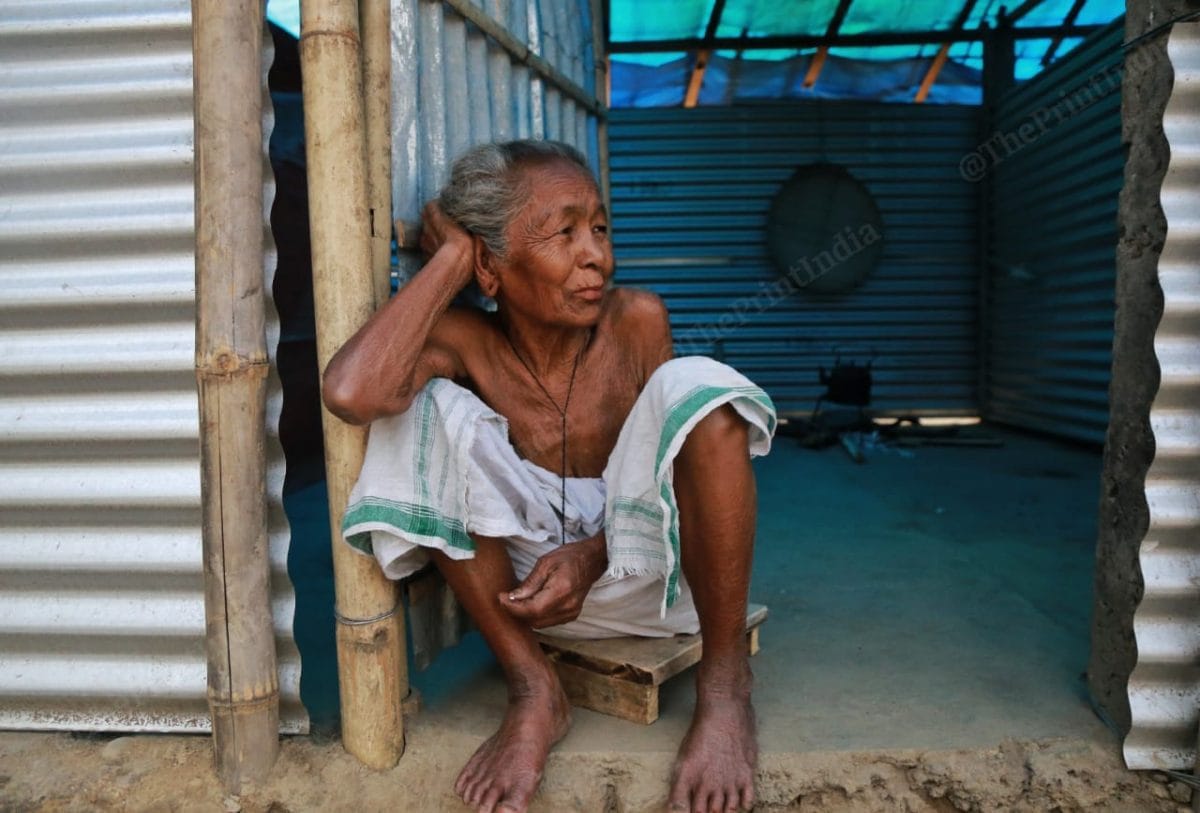
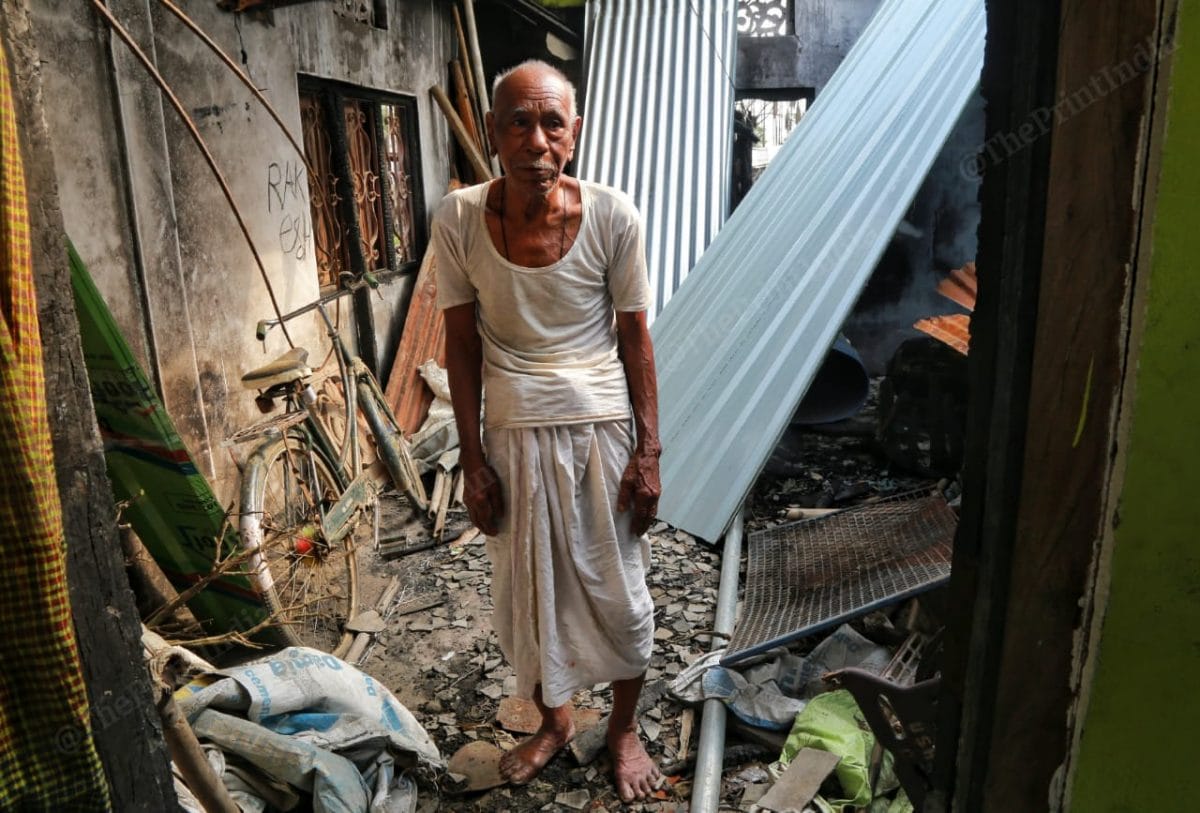
The families in the area were primarily dependent on the plantations for livelihood. They are now looking for jobs in nearby villages and towns.
While the government has awarded compensation to villagers for the losses, they said it will take them long to bring their lives back on track.
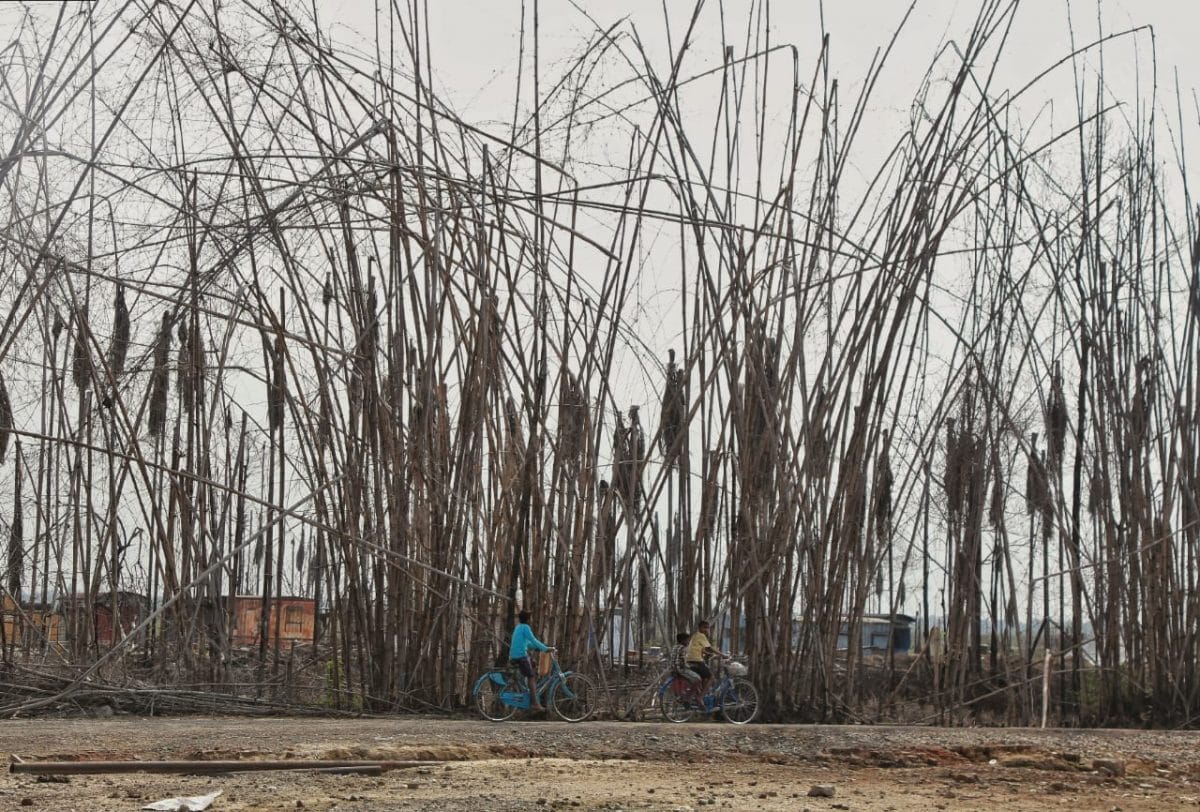
(Edited by Rachel John)



